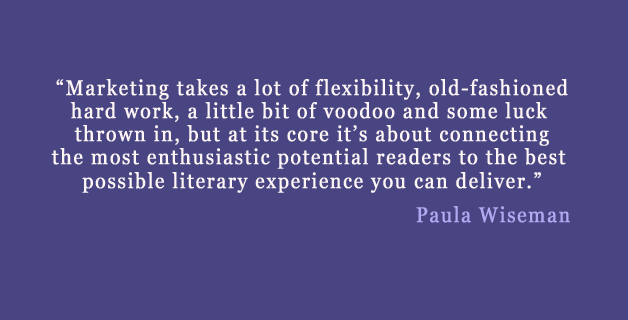
After crafting a terrific story, one of the most important steps you can take to ensure your success is to identify your audience. It helps in two key ways. Last time, we looked at how it helps focus your writing. Today we’ll discuss how it helps focus your marketing.
Very few of us have unlimited budgets or schedules to devote to marketing, so it’s critical to get the greatest possible benefits from our investment. Marketing is also the area that I am least comfortable with and bring the least knowledge with me in the entire book-writing adventure. However, because I’ve taken some time to identify my audience, I’m less tempted to follow every new fad or sure-fire solution touted by the hottest gurus. With each avenue, I can critically evaluate whether it’s a good fit for me and for my readers, and if the answer is ‘no’, then that frees me up to focus on the things that do. Let’s talk about some concrete examples of how identifying your audience helps focus your marketing.
Remember those shelves and tables heaped with gleaming copies of your newest epic? Remember the folks who stopped to check it out and eventually made the purchase?
What caught their eye? Hands-down it was the cover art. It is essential to invest in high quality cover art, but if you know your audience, you can work with your graphic designer and ensure that art hits your target. Again, genre will partially drive this, but age and gender will factor in. My audience is primarily women, but my covers are not especially girly, so I don’t alienate my males readers.
Are they book people, e-book people, or audiobook people? Each format has some unique ways to reach readers. If they are primarily e-book readers, look into ways to get discounted or free versions of your books into their hands. E-books can also open the door for international readers. For traditional books, indie booksellers and libraries are great way to connect. For audio, try podcasts or internet radio.
Where do your readers hang-out online? (Do your readers hang out online?) I’ve found I connect best with my readers through email, blog posts, Facebook and for overseas readers, Twitter has been helpful. I’ve learned that cost of sending a paperback to a book blogger is an extremely cost effective way to get introduced to my kind of readers. Targeted Facebook ads were fairly successful starting out, too. Your readers may frequent Pinterest or Goodreads groups more often, so utilizing graphics or finding a group leader who can be an influencer may be a better strategy.
What else can you offer? I have a good number of book club people, so we always offer a discussion guide with each book. Often times readers are dealing with some of the same issues the characters are, so sometimes I list the books I’ve read for research. I’ve seen other authors offer recipes from their books, or craft instructions. Non-fiction authors can offer all sorts of resource tie-ins, like tip sheets, infographics or videos. Just keep your audience in mind.
In my experience, marketing takes a lot of flexibility, old-fashioned hard work, a little bit of voodoo and some luck thrown in, but at its core it’s about connecting the most enthusiastic potential readers to the best possible literary experience you can deliver. The better you know your audience, the more likely you’ll make that connection.
Paula Wiseman is an award-winning author. Paula has published five books with MindStir Media — all of them have spent time on Amazon.com bestseller lists. Her sixth book, Sanction, will be released later this year. She also had the honor of appearing on Lifetime TV’s “The Balancing Act,” where she discussed her books. Learn more about Paula Wiseman at her website/blog: www.paulawiseman.com